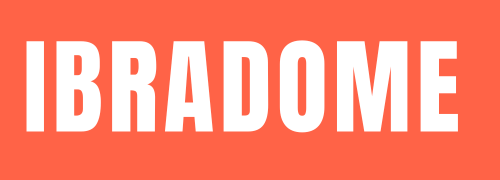If you’ve spent time in the world of digital marketing or website management, you’ve probably heard the term cloaking software whispered in online forums or tossed around in SEO discussions. The premise sounds tempting—crafting content that shows search engines one picture while real visitors see another. But as we’ll explore, this quick fix often leads to long-term headaches, risks, and lost trust.
Understanding Cloaking: What Does It Really Mean?
At its core, cloaking means delivering one version of your website to search engine spiders, and a totally different one to your human audience. While it might seem clever for ranking purposes, this technique is all about misleading. Cloaking software automates the process, letting site owners rapidly shuffle content behind the scenes. The search engine gets a keyword-rich page to boost visibility, while regular users may see something unrelated or even spammy.
The Mechanics Behind the Curtain
Most cloaking software works by identifying who’s knocking at your virtual door. It checks information like IP addresses or browser User-Agents to tell if a visitor is a Googlebot or an everyday user. If it spots a crawler, it wheels out a polished, keyword-stuffed page. For humans, it might serve a landing page, sales offer, or even entirely different content.
Cloaking Versus Personalization
It’s easy to confuse cloaking with legitimate website practices such as localization or geotargeting. The big difference? Personalization aims to enhance the user experience (think language or currency), while cloaking’s sole mission is to manipulate the search engines using cloaking software. The intent behind what visitors see is crucial.
Why Marketers Get Tempted by Cloaking Software
Let’s face it: the stakes in search results are high. Websites are always chasing top rankings, and some people look for shortcuts—especially for tough, competitive keywords. That’s where cloaking software lures in unsuspecting marketers.
- Boosting Rankings Unfairly: Some site owners believe showing keyword-heavy pages only to crawlers can land them higher on Google.
- Masking Spam or Promotional Content: Cloaking allows the hiding of links, spam offers, or even malicious downloads, making only the search engine’s view look clean.
- Sneaking Past Ad and Affiliate Rules: A few affiliate marketers use cloaking software to bypass advertising platform restrictions by showing a compliant site to one group and something entirely different to another.
- Bait-and-Switch Tactics: Sites might attract traffic by ranking for terms like “free music” but redirect users to gambling or unrelated content once they click through.
The Risks of Using Cloaking Software: Why It’s Not Worth It
While the promise of fast gains might sound appealing, the consequences of using cloaking methods are almost always severe. Google, Bing, and other search engines are relentless in hunting down black hat tactics like cloaking software. The penalties can spell disaster for your website.
- Severe Ranking Drops: Search engines can—and do—slash your rankings across the board once cloaking is discovered.
- Getting De-Indexed: You risk having your site banished completely from search results, which can be nearly impossible to recover from.
- Long-Term Impact: Earning back trust after receiving a penalty is difficult, often requiring a total website overhaul or domain change.
- Brand Damage: Users lose trust fast when they realize you’re not being upfront. Reputation can take a long time to rebuild.
Most Common Cloaking Methods
There are several sneaky ways to cloak content, and cloaking software often combines more than one to maximize results. Being aware of these tricks can help you steer clear of risky territory.
IP-Based Techniques
Some software maintains lists of search engine crawler IPs and serves customized content whenever a match is detected.
User-Agent Detection
By examining User-Agent strings—like those identifying “Googlebot” or common browsers—websites can switch content on the fly depending on who’s visiting.
JavaScript Redirection
Clever use of JavaScript can present one version of a page, but quickly redirect (or rewrite) the content for users while bots, which may not execute scripts fully, see the optimized original.
Smart SEO: How to Keep Your Site Safe (and Climbing!)
There’s no substitute for transparency and real value. Rather than chasing the risky promise of cloaking software, invest in genuine strategies:
- Produce quality, original content that serves your audience’s needs
- Use white-hat SEO techniques to rank higher safely
- Focus on building backlinks from trusted sources
Search engines want to connect users with honest, helpful websites—so does your reputation.
Conclusion: Sustainable SEO Beats Cloaking Software Every Time
Shortcuts like cloaking might tempt you with fast wins, but the setbacks can halt your site’s growth for years. Real SEO success comes from providing authentic value, clear messaging, and trust—not outsmarting search engine algorithms. Avoid cloaking software and build your site on a strong, ethical foundation for results that last.
Frequently Asked Questions (FAQs)
- What is cloaking software?
Cloaking software is a tool that lets you present different content or URLs to search engines than to real users, all in an attempt to manipulate SEO rankings. - Is cloaking legal or allowed?
Cloaking violates major search engine guidelines, leading to site penalties or removal from search results—even though it may not be illegal by law. - How do search engines spot cloaking?
Search engines cross-check what their bots see with what users see, using both advanced algorithms and human review to catch discrepancies. - Can you fix a site penalized for cloaking?
Recovering from a cloaking penalty is extremely challenging. You need to clean up all cloaked content and file a reconsideration request, but getting back in search results isn’t guaranteed. - How is cloaking different from A/B testing?
A/B testing rotates page variations for better user experience and improvement, while cloaking specifically hides the true content from search engines to alter rankings.

